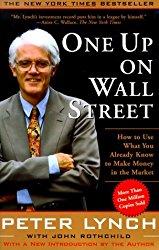Mutual funds should be the foundation of your retirement accounts, your health savings accounts, and your college accounts. Once you have those areas covered, you’re ready to start investing just to supplement your income and so that you have money available when you need to make large purchases like the next used car or the next roof. Mutual funds are useful here too and you can do all of your investing with just mutual funds if you really don’t want to mess with things much. Buying individual stocks, however, can be a way to increase your returns. Done the right way (which is to buy for long-term and to only pick a few great stocks, rather than either trying to trade and time the market or buy little bits of several different stocks), you can definitely do a lot better than you can in index funds. It also allows you to time sales to reduce your tax burden and have a bit more control over how your money is invested.
Individual stock investing doesn’t really require a lot more time than mutual fund investing since you’re making long-term investments. Doing so does require, however, that you learn how to pick individual stocks. Stock picking is more of an art than a science. Just as a good chef will put in “just enough” wine into a dish or know when something “looks done” a good stock picker will have a feel for when a company’s stock is a good pick. There are many people who try to create various stock screens to pick out a few stocks from the list of hundreds. These are useful for narrowing down the field, but it does not entirely replace the personal touch.
That said, there are certain things to look for when picking a stock for a long-term investment. A good book for learning about stock picking is One Up On Wall Street: How To Use What You Already Know To Make Money In The Market

The basic philosophy in selecting stocks is to pick a stock as if you were buying the company. You, therefore, are not really interested in the movements of the price of the stock, the latest commentaries about the economy, or what the Federal Reserve is doing with interest rates. You are interested in the health of the company, the effectiveness of the management, and the prospects for future growth.
One of the best places I’ve found for finding stocks is the Value Line Investment Survey. (Note that I don’t get any kind of payment from Value Line for endorsing them – they’re just a good source of information.) Value Line provides full-page reports on the 1500 or so stocks they cover. They also rank stocks based on a proprietary system called Timeliness. A Timeliness of 1 means that it is one of 100 stocks they expect to do best over the next year.
The reason I like Value Line is that they provide earnings histories and earnings forecasts, along with projections of earnings for the next several years. They also give information on earnings and dividend growth, projections for price growth over the next 3-5 years, and a write-up on current activities and events. I have not found another source on the internet or elsewhere that provides the same kind of history and projections.
Here are some of the things I look for when picking a stock:
Earnings growth: A company increases in value as its earnings increase. I look for stocks that have earnings increasing by 10-15% per year steadily.
Steady price increase: I look for stocks that have been trending upwards in price for many years. I may sometimes buy a stock that has fallen and started to recover, but nothing beats a stock that just increases in price steadily each year. Note this also tends to mean steady earnings growth.
Dividend growth, if it pays one: If a stock pays a dividend, I look for steady growth in the 5-10% range. Stocks that increase their dividends year after year tend to grow year after year. Note that even if it only pays 2% now, if that dividend increases by 10% per year, you’ll be getting the equivalent of a 4% return on your money in seven years and 8% in 14 years. That is in addition to appreciation in stock price.
No debt: I don’t hold hard and fast to this rule, but it sure is nice if a stock has no debt. It shows that the officers can manage their growth and spending well.
High cash flow: A stock that is generating a lot of cash is able to seize upon opportunities easily. Ideally you’ll find a stock that has enough free cash from its basic operations to pay for growth.
A high beta: Stocks that have higher beta values are riskier and therefore return more over long periods of time. I don’t always choose a stock with a high beta, but seeing a beta above 1 is certainly not a negative for some of my holdings.
Room for growth: A stock will only continue to increase in price if there is room for expansion. It is best to get into a stock while there is still a of room to grow.
Please contact me via [email protected] or leave a comment.
Follow me on Twitter to get news about new articles and find out what I’m investing in. @SmallIvy_SI
Disclaimer: This blog is not meant to give financial planning or tax advice. It gives general information on investment strategy, picking stocks, and generally managing money to build wealth. It is not a solicitation to buy or sell stocks or any security. Financial planning advice should be sought from a certified financial planner, which the author is not. Tax advice should be sought from a CPA. All investments involve risk and the reader as urged to consider risks carefully and seek the advice of experts if needed before investing.
